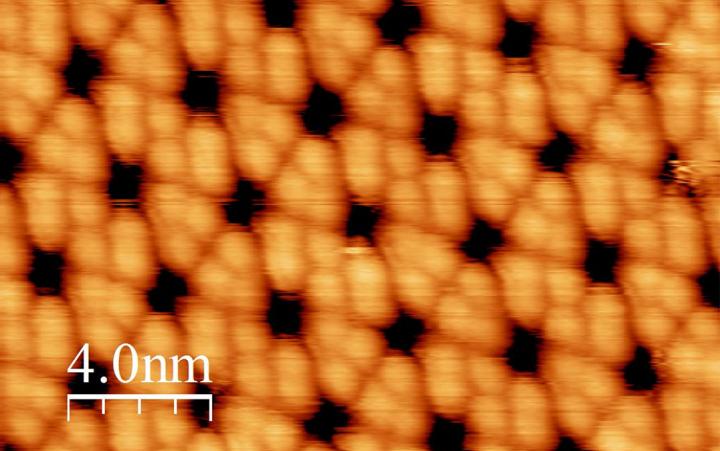Researchers from the University of Tsukuba use time-resolved photoemission electron microscopy to probe the electron dynamics of solid-state film OLEDs
Tsukuba, Japan – Organic light-emitting diodes (OLEDs) are widely used in display technology and are also being investigated for lighting applications. A comprehensive understanding of these devices is therefore important if their properties are to be harnessed to their full potential. Researchers from the University of Tsukuba have directly observed the photoexcited electron dynamics in an organic film using time-resolved photoelectron emission microscopy. Their findings are published in Advanced Optical Materials .
OLED displays are popular because they are bright, lightweight, and do not consume a lot of power. Their output is generated when an exciton–a combination of an electron and an electron hole–releases its energy. However, this release is not possible for all OLED excitons, which makes their overall efficiency low.
To address this limitation, researchers are focusing on OLEDs that exhibit thermally activated delayed fluorescence (TADF-OLEDs), which show efficiencies of up to 100%.
However, details of the electron dynamics that affect their performance are not fully understood. Attempts to learn more have used poorly defined models, meaning the findings have been difficult to interpret and apply to other systems.
The researchers focused on a single-component, solid-state film of a material known as 4CzIPN and investigated it using time-resolved photoemission electron microscopy (TR-PEEM). They compared their findings with observations made using the more commonly used time-resolved photoluminescence (TR-PL) method to try to establish details of the decay process that were previously unknown.
“Solid-state films are excellent materials for OLEDs because they make the device fabrication process simpler, reduce the degradation that is often seen, and exhibit excellent quantum efficiencies,” explains study corresponding author Professor Yoichi Yamada. “The trouble is that we still don’t fully understand what is happening to the excitons, so there’s the possibility that we could be making them even better.”
The researchers successfully detected the photoexcited electron dynamics of the TADF solid-state film using TR-PEEM. And by comparing with TR-PL results they identified long-lived electrons that they believe were formed by the dissociation of excitons.
They found that up to 4% of the excitons formed may dissociate and become trapped in the film. Very little evidence for this has been noted using other techniques.
“In addition to detecting a feature of exciton decay in TADF-OLEDs that has not been directly observed to date; we also demonstrated the potential of the TR-PEEM method,” Professor Yamada explains. “We believe our findings will make a significant contribution to the development of efficient OLED-based products.”
###
The article, “Direct Observation of Photoexcited Electron Dynamics in Organic Solids Exhibiting Thermally Activated Delayed Fluorescence via Time-resolved Photoelectron Emission Microscopy”, was published in Advanced Optical Materials at DOI: 10.1002/adom.202100619.
Media Contact
Naoko Yamashina
[email protected]
Related Journal Article
http://dx.





